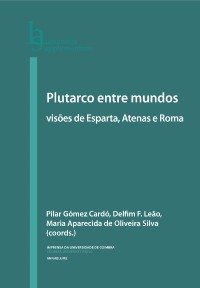Please use this identifier to cite or link to this item:
https://hdl.handle.net/10316.2/36409| Title: | Plutarco entre mundos: visões de Esparta, Atenas e Roma | Other Titles: | Plutarch between worlds: visions of Sparta, Athens and Rome | Authors: | Gómez Cardó, Pilar Leão, Delfim F. Silva, Maria Aparecida de Oliveira |
Keywords: | Plutarch;Athens;Sparta;Rome;Education;Religion;Power;Plutarco;Atenas;Esparta;Roma;Educação;Religião;Poder | Issue Date: | 2014 | Publisher: | Imprensa da Universidade de Coimbra Annablume Editora |
Abstract: | The vast and varied work of Plutarch naturally allows an approach from different perspectives, with a variety of intentions and plural purposes. However, it is also important to identify common lines of approach, because they demonstrate, both formally and in terms of content, that there are many customary elements underlying his work.
The thirteen contributions to this volume are linked by the names of three cities: Sparta, Athens and Rome. They represent diverse political and institutional spaces because of their geographical extension and chronology, and they symbolize as well different models of social organization through which Greece can be contrasted with Rome, or Athens compared to Sparta — but perhaps their most interesting feature in Plutarch's work is that they are paradigmatic places where men live and coexist together. Therefore, the Plutarchists who contributed to this volume analyze for each of these cities, by assimilation or contrast, the way the author from Chaeronea envisages the connection between individual and community as reflected in the exercise of power and the living of religious experiences; the role played by education and private affairs in the public image of Plutarch’s protagonists; or the extent to which the image of the first lawgivers and mythical founders was conditioned by the historical development of these cities. A vasta e variada obra de Plutarco permite sempre uma abordagem a partir de distintas perspetivas, com diferentes intenções e propósitos variados. No entanto, é importante identificar também fios comuns nessa abordagem, porque permitem demonstrar, tanto a nível formal como de conteúdo, que há muitos elementos comuns que permeiam o trabalho de Plutarco. Os treze contributos para este volume têm como elo comum o nome de três cidades: Esparta, Atenas e Roma. Elas representam espaços políticos e institucionais diversos, dada a sua extensão geográfica e cronológica, mas simbolizam igualmente diferentes modelos de organização social através dos quais a Grécia pode ser contrastada com Roma ou Atenas comparada com Esparta — ainda que o seu verdadeiro interesse na obra de Plutarco seja que representam sempre locais paradigmáticos onde vivem e convivem pessoas. Por isso, os estudiosos de Plutarco que contribuíram para este volume procuram analisar em cada uma dessas cidades, seja por assimilação ou por contraste, a forma como o autor de Queroneia aborda a ligação entre indivíduo e comunidade a partir do exercício do poder e da experiência religiosa; qual o papel da educação e do domínio privado na projeção pública dos protagonistas retratados por Plutarco; ou até que ponto a imagem dos primeiros legisladores e fundadores míticos foi condicionada pela evolução histórica destas mesmas cidades. |
URI: | https://hdl.handle.net/10316.2/36409 | ISBN: | 978-989-26-0920-1 978-989-26-0921-8 (PDF) |
DOI: | 10.14195/978-989-26-0921-8 | Rights: | open access |
| Appears in Collections: | Plutarco entre mundos: visões de Esparta, Atenas e Roma |
Files in This Item:
| File | Description | Size | Format | |
|---|---|---|---|---|
| plutarco_entre_mundos.pdf | 2.18 MB | Adobe PDF |  |
Items in DSpace are protected by copyright, with all rights reserved, unless otherwise indicated.
